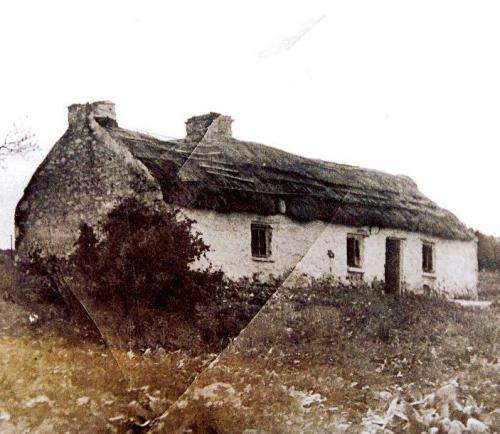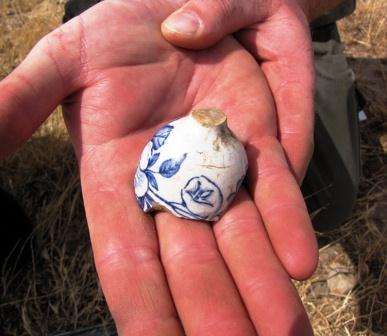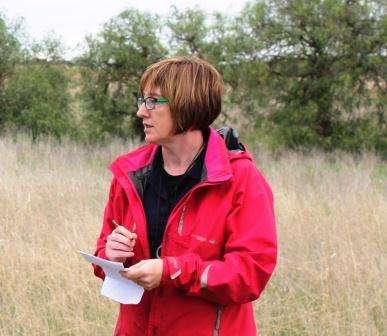Uncovering the Irish story of Baker's Flat

There's a ghost town on Baker's Flat in South Australia, but you have to look hard to find it.
Its ghosts wear heavy work trousers, fastened with buttons from Kapunda, and some have cricket buckles on their belts.
They are dog lovers and keen rifle men who trade sweetheart jewellery and collect fancy pottery. Some even enjoy having their boiled eggs from expensive egg cups of a morning.
Many are God fearing, pious people who hold religion close to their hearts.
They're a pretty varied bunch, but if you listen carefully, you'll notice they all have one thing in common, which is that they speak with strong Irish accents.
Looking at Baker's Flat today, it's hard to believe that the area was once home to a thriving Irish community of up to a thousand people.
Their shacks and white-washed cottages are long gone, and you often have to dig to find any evidence that they were ever there at all.
It's even harder to find the local Irish in most of the written histories of Australia. With their Anglo-centric leanings and disdainful take on anything that might be considered anti-establishment, they often paint a dire portrait; one of vagrants and bandits, of drinkers and fighters with nothing more useful to offer than a bit of work for the police officers kept busy bundling them into 'Paddy Wagons' every weekend.
Susan Arthure, a Master of Archaeology candidate at Flinders University, who hails from Ireland herself, is one of the people shining a kinder, and fairer, light on some of Australia's first Irish settlers.
Her work at Baker's Flat paints a complex, and often positive, picture of the site's former inhabitants, most of whom were economic migrants who came to South Australia around 1854 to provide much needed labour for the local copper mine and farms.

Among the crucifixes and religious medals commonly held by Irish Roman Catholics, a wide range of other items found at the site hint at a diverse and hardworking community playing an active and valuable role in South Australia.
"The commonly held view of Baker's Flat is of a place of very poor people living in desperate circumstances," Susan said. "But when we examined the site we found ceramics, glass, metal artefacts and even a painted ceramic egg cup.
"This challenges the idea of absolute poverty because it indicates the people of Baker's Flat were not so poor that they couldn't afford to buy some luxury items."
Also challenging the notion of a lawless and socially ostracised community is the presence of local buttons, cricket belt buckles, objects associated with shooting and hunting, and dog registration tags.
"Hundreds of trouser buttons have been found at the site," Susan said. "Significantly, some of them are Shakeshaft buttons from local button makers in Kapunda, which indicates the people of Baker's Flat were buying items and contributing to the local economy."
Among the more unusual items found were 12 cricket belt buckles. "For a period in the 19thcentury, cricket was the most widely played sport in Ireland," Susan said.
"We know the local Hibernian Cricket Club was an 'Irish' team, and this suggests a degree of organisation and discipline at odds with the more negative stereotypes."
The Kapunda Rifle Club, a place where people of all classes mixed, was opposite Baker's Flat and Susan believes some of the local residents may have been members.
"We found snake belt buckles, bullets and cartridges, which are all items associated with shooting, as well as uniform buttons of the South Australian Volunteers, which had a Company at Kapunda."

"With the rifle club in such close proximity, it's possible that some of the residents were active members and would have mixed with people at all levels of society."
Susan said the presence of dog registration tags offers further evidence that the residents of Baker's Flat's played a part in the wider community.
"Registering a dog was expensive, and 107 dog registration tags were found, which again challenges the idea that the community was one which flouted the law," she said.
One theory for the large number of tags is that the dogs were used for coursing and were most likely greyhounds. This would fit in with historical records of the surrounding area.
"Records show that up to 1,000 spectators on horseback were known to have followed the dogs during events at the Kapunda Coursing Club," Susan said.
"This large number of spectators indicates that even if the Irish were there primarily to compete, they were doing so in a law-abiding manner as part of the wider community."
Provided by Flinders University




















